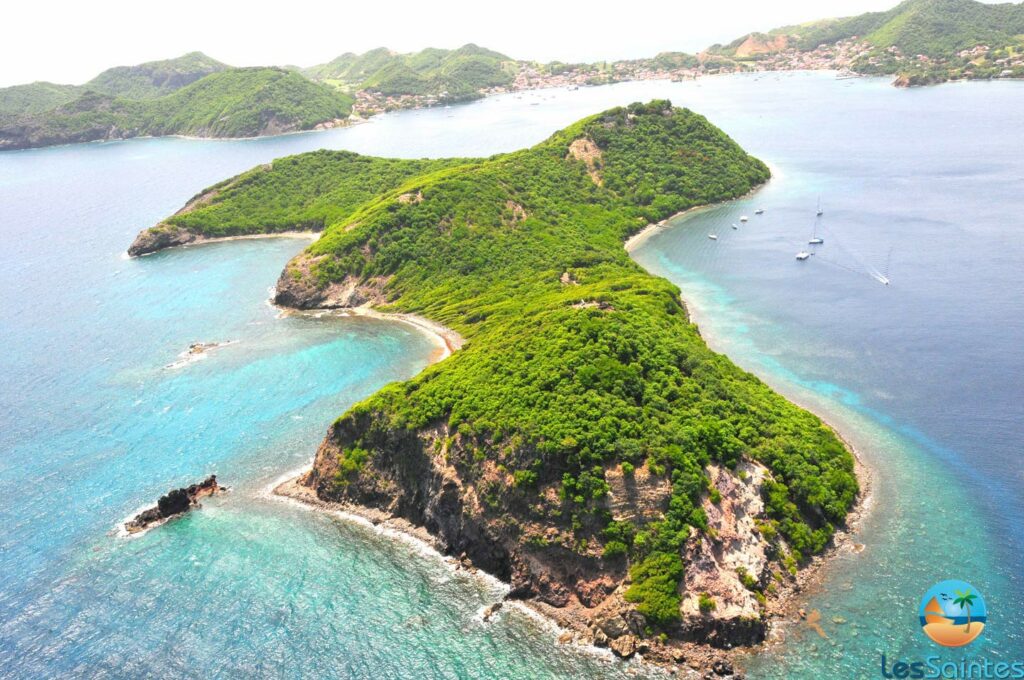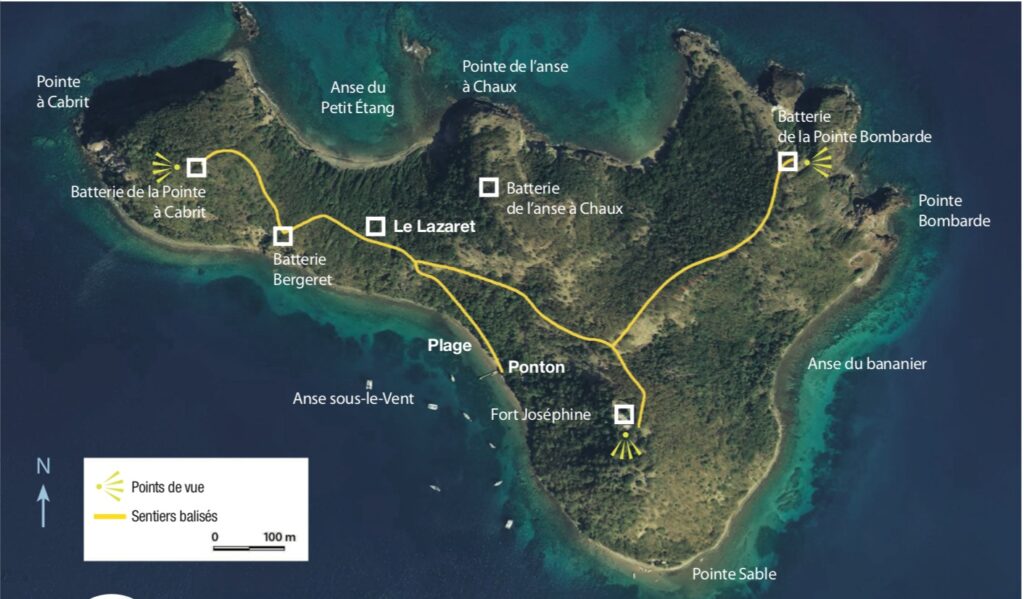
CABRIT’S ISLAND
Description
Cabrit’s island, an uninhabited island of almost 38 ha, has retained its wild character with 3.8
km of coastline. Located in the bay of Terre-de-Haut, just 1.2 km away, it played an important
role in the constitution of the defensive system, as a fortified lock at the entrance to Les Saintes
between the 16th and 18th centuries. A century later, it housed a penitentiary and a project for
a hotel complex (1960), which ended up being abandoned; leaving the islet in a good condition.
The vegetation then recovered its space, hiding the numerous vestiges of this turbulent history.
This beautiful islet is also part of the ensemble and identity of one of the most famous bays in
the West Indies. The contrast of the reliefs gives a wide view of the Saintes archipelago and
the crystalline waters of the sea, whose bottom forms a turquoise blue halo. Fort Joséphine,
built on its summit, offers a wide panorama from which you can see La Soufrière, and just
opposite, Fort Napoleon.
Surrounded by wild coasts (reefs and beaches), the islet presents wooded landscapes dotted
with some clearings, and multiple traces of successive human occupations.
Biodiversity
Characterized by volcanic soil* typical of the Saintes’ archipelago, largely covered by
secondary dry forest* dominated by the presence of Lonchocarpus punctatus (known as “Bois-
Savonnettes” in the Antilles) and pink manjack (Tabebuia heterophylla). The coastal forest at
Mancenilliers is also home to pink manjack trees. Although the name of the place originates
from goat grazing, its importance has caused serious damage to the young plants of the
understory, preventing the regeneration of the forest cover and threatening the population of the Turk’s cap cactus (Melocactus intortus), and of the acerola cherry (Malpighia emarginata). The aerial understory is dotted with shrubs and is home to a diverse fauna of birds (purple-
throated carib (Eulampis jugularis), yellow warbler (Setophaga petechia), black-whiskered
vireo (Vireo altiloquus), etc.) as well as endemic species of Saintes such as the leopard anole
(Anolis marmoratus) or the Terre-de-Haut racer (Alsophis sanctonum). Certain more open
areas, such as the Cactus savannahs* at the level of the cliffs, are of great heritage interest due
to the presence of the Turk’s cap cactus (Melocactus intortus), but also of protected marine
birds (tropicbird (Phaethon sp.), bridled tern (Onychoprion anaethetus), osprey (Pandion
haliaetus) ).
Ecotourism potential
Although the islet of Cabrit must remain preserved from massive frequentation as this would
negatively affect nature, it is necessary to improve its access and discovery conditions. Three
main routes are proposed to reach Fort Joséphine, the “Pointe à Cabrit” battery or the “Pointe
Bombarde” battery. Allowing discovery of major points of interest, these trails funnel public
assistance along safe routes and prevent visitors from wandering through the undergrowth.


Informations
-
Types de milieux
Îlets -
Location
Guadeloupe (Terre-de-Haut, Les Saintes)
